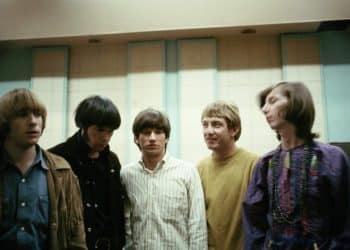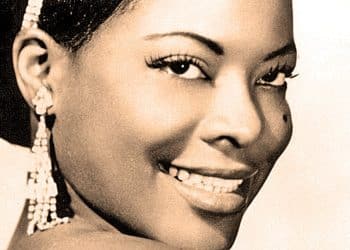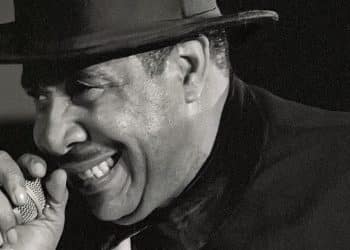Few artists have left a legacy as enduring and iconic as Johnny Horton. Known as the “Singing Fisherman,” Horton carved his name into the annals of country and rockabilly music with his unforgettable voice, masterful storytelling, and larger-than-life energy. From his rousing ballads about historical events to his heart-wrenching tales of love and loss, Johnny Horton had a special gift for capturing the spirit of adventure and the soul of America.
In this article, we’re diving into the top 10 most popular Johnny Horton songs of all time—a collection of tracks that have stood the test of time and continue to resonate with fans across generations. Whether you’re a lifelong fan or a newcomer to his music, this list will take you on a thrilling journey through the highlights of Horton’s career. Get ready to revisit the fiery battles, brave explorers, and poignant love stories that defined his legendary sound.
So, strap in, turn up the volume, and let’s explore the songs that made Johnny Horton a titan of country music—a true trailblazer whose hits still echo through the halls of musical history!
1. The Battle of New Orleans (1959)
Johnny Horton’s signature hit, “The Battle of New Orleans,” is more than just a catchy tune—it’s a full-blown musical retelling of American grit and triumph. Released in 1959, the song transforms a key moment from the War of 1812 into a spirited, foot-stomping narrative that manages to be both educational and wildly entertaining. With its banjo-driven melody and light-hearted lyrics, Horton paints a vivid picture of General Andrew Jackson leading American troops to victory against the British. The humor in lines like “we fired our guns and the British kept a-comin’” makes the song accessible, while the historical details keep it rooted in something real. It became a massive crossover hit, topping both the country and pop charts, and even snagged a Grammy Award. Horton’s ability to blend historical storytelling with toe-tapping rhythms was groundbreaking at the time and influenced countless artists who followed. The song’s enduring appeal lies in its energy and clever use of history—turning what could’ve been a dry lesson into a singalong favorite. “The Battle of New Orleans” stands as a testament to Horton’s unique talent for making the past come alive through music, earning its place as one of the most iconic Americana tunes of all time.
2. North to Alaska (1960)
“North to Alaska” is an adventurous anthem that perfectly captures the bold spirit of the gold rush era, and Johnny Horton delivers it with unshakable charisma. Released in 1960 as the theme song for the John Wayne film of the same name, the track instantly transports listeners to the wild, untamed frontier of Alaska during the Klondike Gold Rush. With its galloping rhythm, booming vocals, and vivid storytelling, Horton brings the rugged landscape and fortune-seekers to life. The lyrics follow Sam McCord as he heads north in search of gold—and perhaps love. Horton’s vocal delivery adds a touch of grit and excitement that fits the song’s adventurous theme, while the catchy chorus makes it feel like an old friend telling you a tale over a campfire. The song was a commercial success and remains a classic in both country and Western film circles. What sets it apart is its cinematic quality—it doesn’t just tell a story, it makes you feel like you’re part of it. “North to Alaska” is not only a highlight in Horton’s catalog but also a defining track of an era that romanticized the great unknown, adventure, and the pursuit of dreams in a new frontier.
3. Sink the Bismarck (1960)
With “Sink the Bismarck,” Johnny Horton once again proves his knack for transforming historical events into gripping, radio-friendly hits. Released in 1960, the song chronicles the dramatic naval pursuit and eventual sinking of the German battleship Bismarck during World War II. From the first booming drumbeat, the track pulls listeners into a suspenseful retelling of one of the war’s most significant sea battles. Horton’s storytelling is fast-paced and cinematic, packed with vivid imagery and an urgent tone that mirrors the intensity of the actual military operation. Lines like “We found that German battleship that’s makin’ such a fuss” balance a touch of levity with real historical detail, helping to make a complicated event accessible to everyday listeners. The song’s patriotic overtones and energetic delivery struck a chord during a time when war stories were still fresh in the minds of many. What makes “Sink the Bismarck” stand out isn’t just the subject matter—it’s Horton’s ability to make you feel like you’re right there on the deck, watching history unfold. It’s a powerful tribute to bravery and strategy, wrapped in a rockabilly package. The song remains a fan favorite and a prime example of Horton’s talent for turning the past into unforgettable music.
4. Whispering Pines (1959)
“Whispering Pines” showcases a completely different side of Johnny Horton—introspective, emotional, and deeply poetic. Released in 1959, the song is a gentle ballad that trades historical heroism for heartfelt vulnerability. The lyrics are filled with longing and sorrow, as the narrator seeks comfort in the soft, rustling voices of the trees, hoping they might whisper back the words of a lost love. Horton’s voice, often full of fire and bravado, softens here into something tender and sincere. The melody is slow and soothing, carried by gentle guitar and subtle harmonies that create a sense of solitude and peace. There’s a haunting beauty to the track, evoking a sense of stillness in nature that mirrors the ache in the singer’s heart. “Whispering Pines” is one of Horton’s most emotional songs, and it’s proof that he wasn’t just a storyteller—he was a true interpreter of emotion. This song connected with fans on a deeply personal level and has stood the test of time as a favorite among those who appreciate the quieter, more thoughtful moments in music. It’s the kind of song that stays with you, offering a sense of comfort in sadness and a reminder of the beauty in reflection.
5. When It’s Springtime in Alaska (It’s Forty Below) (1959)
“When It’s Springtime in Alaska (It’s Forty Below)” is a brilliant blend of humor, romance, and fatalistic twist, all wrapped in Johnny Horton’s signature storytelling style. Released in 1959, the song opens with the quirky juxtaposition of springtime and bone-chilling cold, immediately drawing listeners into the peculiar world of frontier life. The narrative follows a lonesome prospector who stumbles into Fairbanks after two years in the wilderness, only to fall for a redheaded beauty named Red. The melody sways with a gentle waltz rhythm, giving the song a lilting, almost lullaby-like quality that contrasts with its darkly humorous ending. Horton’s delivery is playful and rich with character, painting vivid images of snowy saloons, barroom dancing, and romantic mishaps. The song’s punchline—“When it’s springtime in Alaska, it’s forty below”—lands with a touch of tragic irony, giving the track an edge that sticks with you. It’s this blend of charm and dark wit that makes the song so memorable. “When It’s Springtime in Alaska” is a prime example of Horton’s gift for balancing storytelling with musical craft, offering listeners a glimpse into a rugged world where love, danger, and cold weather all collide.
6. Honky Tonk Man (1956)
“Honky Tonk Man” is where it all began for Johnny Horton, and what a debut it was. Released in 1956, this rollicking, rockabilly-infused track is a celebration of late nights, loud music, and a love for the honky tonk lifestyle. With its driving beat, twangy guitar riffs, and irresistible swagger, the song captured the spirit of a generation of barroom revelers and free spirits. Horton’s vocals exude confidence and charm, telling the story of a man who may not be perfect, but who sure knows how to have a good time. There’s an honesty in the lyrics that makes it relatable—he’s not pretending to be anything more than he is, just a guy who spends his pay on music, women, and whiskey. The track found success on both country and rock charts, bridging genres and establishing Horton as a rising force in the music world. Its raw, rebellious energy helped shape the early sound of rockabilly, paving the way for future icons. Decades later, “Honky Tonk Man” still feels fresh—its catchy chorus and toe-tapping rhythm have never gone out of style. It’s the kind of song that makes you want to roll the windows down and turn the volume up.
7. Johnny Reb (1959)
“Johnny Reb” is one of Johnny Horton’s most stirring and controversial works. Released in 1959, the song pays homage to the Confederate soldiers of the American Civil War. Through bold lyrics and a powerful melody, Horton brings the figure of “Johnny Reb” to life—portrayed not just as a soldier, but as a symbol of grit, pride, and sacrifice. The song walks a delicate line between historical narrative and Southern sentimentality, which has led to both admiration and critique over the years. Musically, the track features a strong beat and marching rhythm, echoing the cadence of drums on a battlefield. Horton’s voice is firm and reverent, offering a kind of solemn respect to those who fought, regardless of politics. Whether viewed through a historical or cultural lens, the song undeniably captures a piece of American history in a way that only Horton could—turning complex moments into compelling music. “Johnny Reb” isn’t just a song—it’s a conversation starter, a reflection of its time, and a testament to Horton’s fearless storytelling. It remains one of his most discussed tracks, showing the power of music to both unite and provoke thought about the past.
8. I’m a One Woman Man (1956)
In “I’m a One Woman Man,” Johnny Horton trades tales of war and whiskey for something sweeter: love and loyalty. Released in 1956, this upbeat country tune is a heartfelt declaration of devotion, wrapped in a catchy melody and playful lyrics. Horton’s delivery is warm and genuine, making it feel like he’s singing straight to the one he loves. There’s a charm in its simplicity—the song doesn’t need grand metaphors or flashy production to get its point across. It’s about being true, being steady, and being proud of it. The gentle guitar and easy rhythm give it a timeless, toe-tapping feel that fits just as well at a wedding as it does in a honky tonk. Over the years, “I’m a One Woman Man” has been covered by artists like George Jones and Dwight Yoakam, proving its lasting appeal across generations. What makes it so enduring is that it speaks to something universal: the idea of finding that one special person and sticking by them through thick and thin. It’s a love song for the everyday person, honest and unpretentious, and it remains one of Horton’s most beloved and relatable recordings.
9. Comanche (The Brave Horse) (1961)
“Comanche (The Brave Horse)” is a poignant and powerful ballad that highlights Johnny Horton’s ability to bring emotion and dignity to historical storytelling. Released in 1961 after Horton’s untimely death, the song tells the true story of Comanche, the horse that survived the Battle of Little Bighorn—one of the most infamous clashes between Native American tribes and the U.S. Army. Rather than glorifying war, Horton takes a more somber and respectful approach, focusing on the lone survivor of the carnage. Through gentle melodies and heartfelt lyrics, he pays tribute to Comanche’s loyalty, endurance, and silent heroism. Horton’s voice carries a reverent tone, allowing the listener to feel the weight of the moment. The song avoids sensationalism and instead evokes a sense of quiet mourning and respect. “Comanche” stands out in Horton’s catalog not just for its subject matter, but for its emotional depth. It’s a reminder that history isn’t only made by generals and soldiers, but sometimes by the silent figures who endure and witness it all. The track leaves a lasting impression, capturing a tragic moment in American history through the eyes of a horse that became a symbol of survival.
10. All Grown Up (1957)
“All Grown Up” is a nostalgic, energetic tune that captures the joy—and bittersweet realization—of growing older. Released in 1957, this rockabilly-tinged track shows Johnny Horton’s fun-loving side, offering a spirited celebration of youth transitioning into adulthood. With its catchy beat and playful lyrics, the song taps into that universal moment when someone realizes they’re no longer a kid—they’re finally “all grown up,” with all the excitement and responsibility that comes with it. Horton’s vocals are filled with enthusiasm, and the music bounces along with a youthful energy that perfectly complements the theme. There’s a mix of pride and wistfulness in the lyrics, which reflect on past freedoms while looking ahead with optimism. It’s a lighthearted tune, but one that carries a relatable message: time moves fast, and growing up is both thrilling and a little daunting. The blend of rock ‘n’ roll swagger and country charm makes it a standout track in Horton’s early catalog. “All Grown Up” doesn’t try to be deep or historical—it’s simply a fun, feel-good reminder of life’s inevitable changes. Whether you’re 18 or 80, there’s something in this tune that will make you smile and maybe even dance a little.









